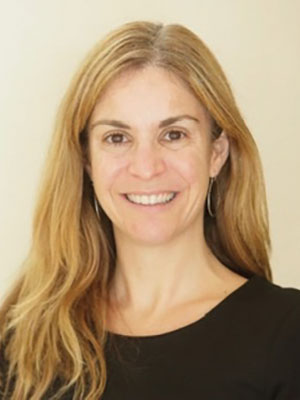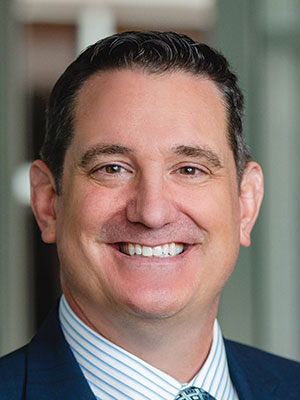I want to get involved with patient advocacy. Where do I start?

Rick Bangs, Bladder Cancer Advocate in Pittsford, New York. Photo courtesy of Rick Bangs
RICK BANGS: While people often think about fundraising when they think of patient advocacy, there are also opportunities in research, government lobbying and support groups. All of these and more fall under the broad umbrella of advocacy.
Given the many possible options, the first thing to think about is what you’d like to do. What do you have a passion for? What experience and skills might you bring to the table? It’s not as rigorous a process as figuring out what you want to do in your career, but otherwise it’s similar. Consider what is needed, where you think you can add value and what opportunities are available.
From there, a web search is usually the best starting point, especially if you don’t already know of an organization you’re interested in. Search for advocacy groups related to your condition. Usually you will find one or more. Take a look at what each group focuses on and how well that matches up with your own interests and goals.
In addition to searching the web, reach out and talk to people. Find out what work they are doing and ask them what else could be done.
There are also practical considerations. A big one is how much time you have available and what that time looks like. When I started out, I was working. I could do advocacy work after-hours during the week or on weekends.
Another thing to think about is whether you would be willing and able to travel. I do a lot of my work over the phone. But, from time to time, I need to travel somewhere. Consider whether that’s something you’d like to do or not.
There are a lot of possibilities and no one path to get there. The key is identifying what you’re passionate about and how to leverage that passion, and then finding like-minded people to work alongside. Once you make those connections, the opportunities tend to snowball pretty fast.
EXPLORE ADVOCACY // A video from the University of Texas MD Anderson Cancer Center explores what a patient advocate does. // The Alliance of Professional Health Advocates offers an overview of professional, independent patient advocacy. // Cancer.net lists ways to be a patient advocate.
I feel like I’m censoring my true feelings about my cancer for my family’s sake. How honest should I be?

Nicole Lise Feingold, Senior Director of Scientific and Medical Affairs at the Pancreatic Cancer Action Network in Manhattan Beach, California. Photo courtesy of the Pancreatic Cancer Action Network
NICOLE LISE FEINGOLD: Experiencing a range of emotions is a natural reaction to a cancer diagnosis. You might be tempted to put on a “happy face” as a way of trying to protect yourself or your loved ones. Many of the feelings you’re experiencing are difficult, unfamiliar and even uncomfortable. You might worry about being perceived as negative. Unfortunately, when strong feelings like anger, sadness or fear are held in, problems such as depression, anxiety and hopelessness can develop.
It’s important to know that your family members are most likely feeling similar emotions as they face your diagnosis. You may find comfort and support in expressing your true feelings with each other.
Some patients and caregivers find it helpful to connect with a professional counselor or therapist to guide them through expressing the emotions that may arise with a cancer diagnosis. A trusted community member can also be helpful in facilitating family dialogue and making it easier to share feelings candidly.
There are resources available to match cancer survivors and caregivers to communicate one-on-one with people diagnosed with cancer and their loved ones. These volunteers can help by sharing their experiences and providing support and encouragement. Support groups can also be very helpful in identifying and discussing feelings. There’s nothing like sharing with others who have walked a similar path.
Cancer creates a new normal. Try to be honest about how you are doing and what you are feeling so you and your family can tackle this new normal together. Approaching this as a team usually makes it easier.
OPENING UP ABOUT CANCER // The National Cancer Institute explores the many feelings that may come with cancer. // Cancer Support Community has tips on talking to kids and teens about cancer. // The American Cancer Society offers advice on working through your emotions.
I’m scared by the prospect of hospice. What should I know?

Jon Radulovic, Vice President of Communications at the National Hospice and Palliative Care Organization in Alexandria, Virginia. Photo courtesy of the National Hospice and Palliative Care Organization
JON RADULOVIC: There’s often a misunderstanding that hospice is only what you do when there’s nothing left to do, when death is imminent. But it’s important to understand that hospice is ideally suited for the last months of life, not the last days of life.
Hospice can be introduced when cure is no longer possible and a doctor estimates that a patient will have six months or less to live if the disease follows the projected course. At this point, the focus shifts to quality of life, pain management and symptom control.
Patients, family and caregivers can all benefit from the services provided by the interdisciplinary hospice team. Hospice staff will help families with caregiving and offer them support in doing the many jobs that families have to do. Hospice also includes emotional and spiritual support.
Hospice doesn’t mean you are giving up. In fact, one study showed that hospice patients, including those with a diagnosis of cancer, lived on average 29 days longer than those who weren’t receiving hospice care. So, that’s a reminder that the holistic and interdisciplinary care that comes with hospice can be beneficial, even though it won’t change a terminal diagnosis.
Patients in hospice care do not receive curative, disease-modifying therapies for their terminal illness. The patient and his or her family need to make this decision. No two people will make that decision in exactly the same way or at exactly the same time.
We encourage people to ask about palliative care throughout their treatment. Palliative care is based on the same interdisciplinary team model as hospice and is similarly focused on providing relief from the symptoms and stress related to a serious illness. But it can be delivered in conjunction with more aggressive treatment of the disease.
In the U.S., hospice care organizations are some of the largest providers of community-based palliative care. Introducing palliative care alongside treatment can sometimes ease the transition to hospice care if needed.
The time to start thinking about hospice care is long before you would need it. Start looking at what the options are in your community and make tentative plans in case things don’t go the way you hope. When a loved one has a serious illness, it’s always difficult and scary. Support to help you get through this experience is out there, whatever the journey turns out to be.
UNDERSTANDING HOSPICE // The National Hospice and Palliative Care Organization provides free resources to help people make decisions about end-of-life care before a crisis. // CancerCare explains the importance of hospice care. // The National Comprehensive Cancer Network details how to find and pay for hospice care.
Cancer Today magazine is free to cancer patients, survivors and caregivers who live in the U.S. Subscribe here to receive four issues per year.




